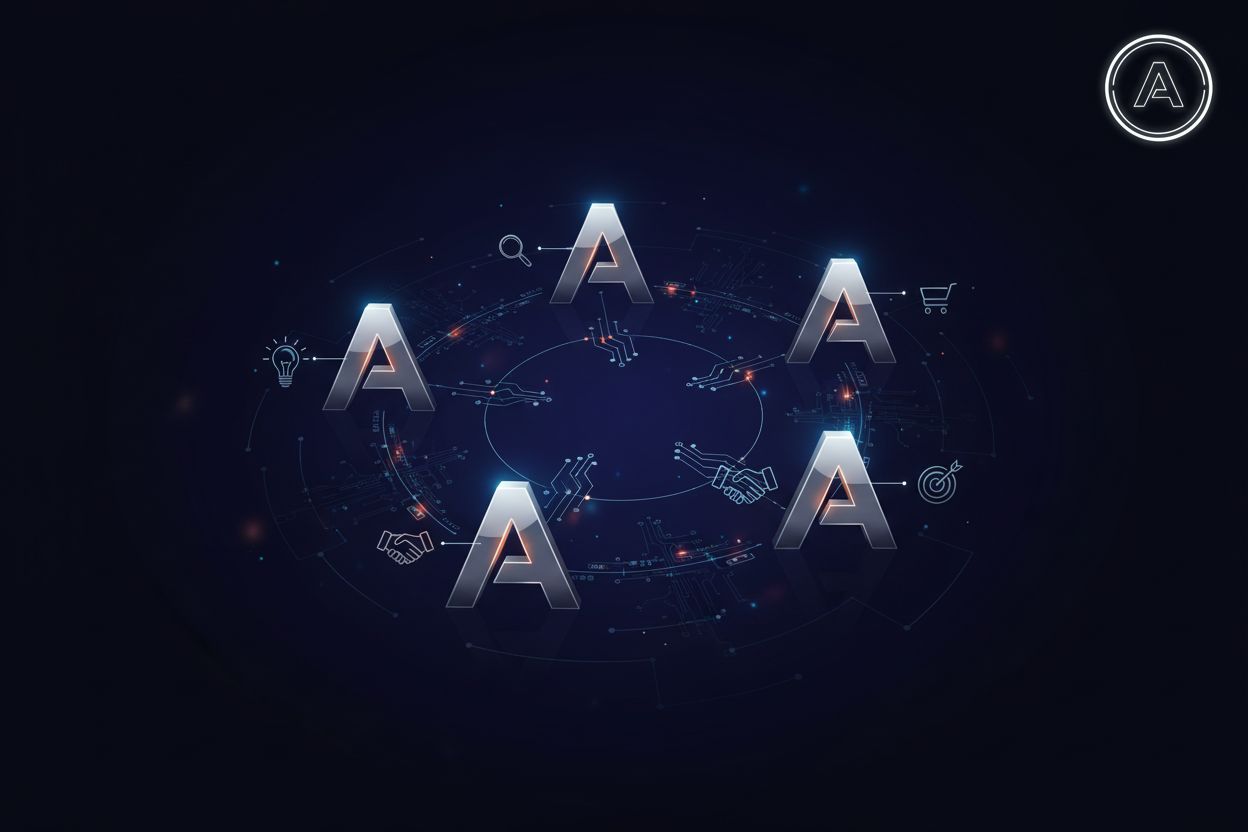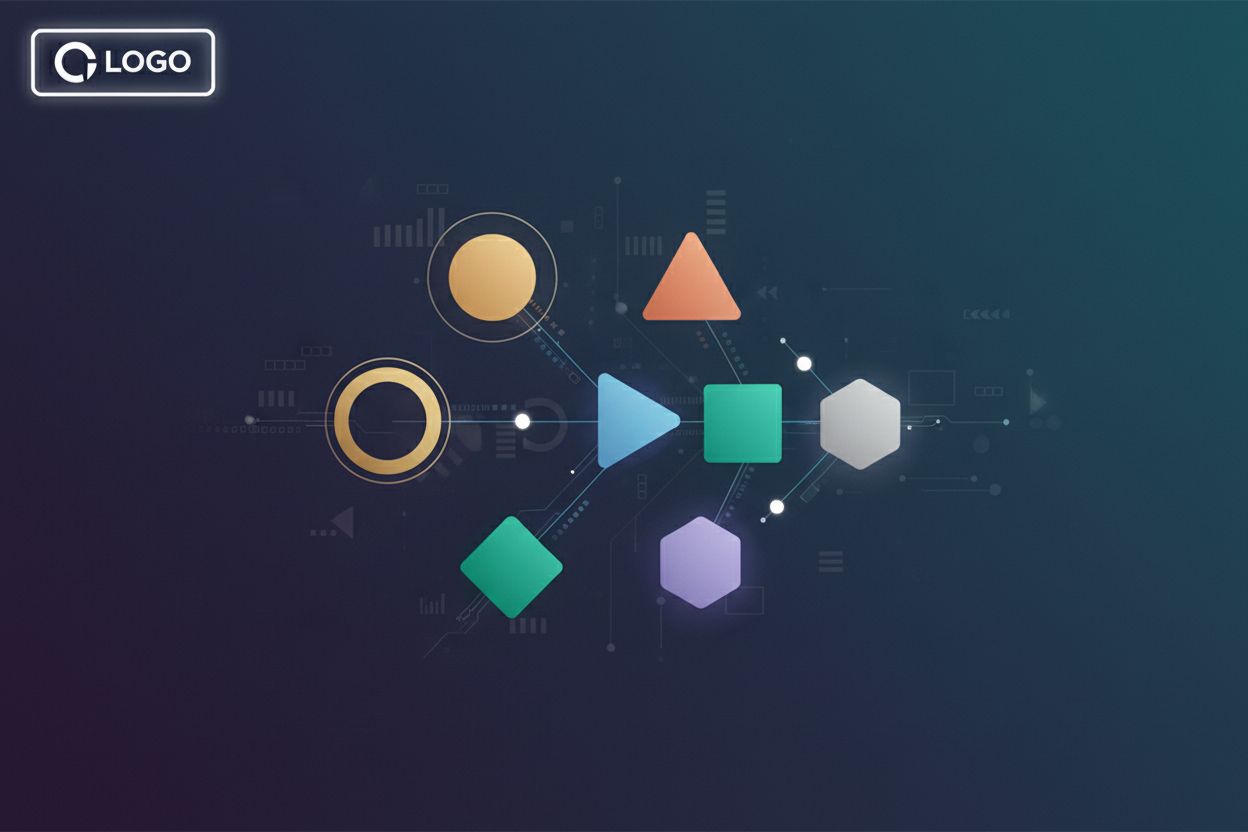Unlocking Brand Potential: Mastering Archetypes in Digital Storytelling
TL;DR
Introduction: The Enduring Power of Archetypes
Did you know that stories are 22 times more memorable than facts alone? Archetypes, those universal patterns of human behavior, can unlock your brand's storytelling potential. By using archetypes, you can cut through the digital noise and create deeper connections with your audience.
Archetypes represent fundamental human experiences, desires, fears, and motivations. Think of them as the DNA of storytelling. They are deeply ingrained in our collective unconscious, making them instantly recognizable and relatable.
- In today's crowded digital landscape, archetypes help your brand stand out. They offer a shortcut to understanding customer needs and desires, allowing you to craft messaging that resonates on a profound level.
- Brands that align with archetypes can evoke powerful emotions and create lasting impressions. This is because archetypes tap into universal human experiences.
- According to Ivio Agency, storytelling is such an innately human concept that humans tend to think in the form of stories, and storytelling may even be a hardwired part of our brain.
Archetypes provide a solid foundation for crafting authentic and compelling brand stories. These stories can differentiate your brand in a crowded marketplace. Consistency in brand messaging and visual identity is key to building trust and recognition.
- By aligning your brand with a specific archetype, you create a recognizable persona that consumers can easily identify with. This consistency builds trust and fosters long-term relationships.
- Archetypes provide a framework for crafting narratives that captivate your audience's imagination. This storytelling depth sustains consumer engagement and investment in your brand's journey.
- As Axies Digital notes, archetypes serve as a bridge connecting a brand’s identity with the psyche of the consumer, rendering the brand an integral part of the individual’s personal story.
Archetypes can guide digital transformation efforts by keeping the focus on the customer. They help create a consistent brand experience across all digital touchpoints. Focusing on customer-centricity can foster a digital culture that aligns with brand values.
- By understanding your brand's archetype, you can ensure that your digital presence reflects your core values and resonates with your target audience.
- Archetypes help foster a digital culture that aligns with your brand values. This ensures that your employees are also living and breathing your brand's story.
- As Elevating Brands mentions, it's amazing how powerful it is as a tool, because once the CEO and once the top, the C-level, the C-suite staff have bought into it, it makes those conversations about marketing that much easier.
Now that we've explored the enduring power of archetypes, let's delve into the 12 primary archetypes and how they can shape your brand's identity.
The 12 Brand Archetypes: A Comprehensive Overview
Did you know that brands using archetypes are more likely to create lasting emotional connections? Let's explore the 12 brand archetypes and how they shape brand identity.
Each archetype embodies unique values, motivations, and attributes. These archetypes provide a foundation for brands to build authentic and relatable stories.
- The Innocent: Values simplicity, optimism, and happiness. Brands like Honest Beauty use this archetype to evoke trust and wholesomeness.
- The Everyman: Seeks connection and belonging. Target and Ford represent this archetype by providing relatable products and a sense of authenticity.
- The Hero: Driven by courage and a desire to overcome challenges. Nike exemplifies this archetype, inspiring consumers to achieve their goals.
- The Outlaw: Values freedom and rebellion. Harley Davidson connects with consumers' desire for liberation and nonconformity.
- The Explorer: Seeks adventure and self-discovery. Patagonia encourages consumers to explore the world and embrace new experiences.
- The Creator: Values innovation and imagination. Apple and Crayola inspire creativity and empower individuals to express themselves.
- The Ruler: Seeks control and order. Brands like Rolex represent luxury and prestige, appealing to consumers who value status.
- The Magician: Driven by transformation and a desire to make dreams come true. Disney embodies this archetype, creating magical experiences for its audience.
- The Sage: Values knowledge and wisdom. Google and BBC position themselves as trusted sources of information and guidance.
- The Lover: Seeks intimacy and connection. Victoria's Secret uses this archetype to create a sense of indulgence and closeness with its customers.
- The Jester: Values humor and lightheartedness. Old Spice and M&Ms use humor to create positive associations and engage consumers.
- The Caregiver: Driven by compassion and a desire to protect others. Walgreens and Pampers offer nurturing products and services, providing a sense of security.
Identifying the right archetype involves aligning it with your brand's core values and mission. Assess your brand's existing identity and messaging to determine its current archetypal alignment. Internal alignment is also crucial; employees should understand and embody the chosen archetype.
Understanding these archetypes is the first step. Next, we'll explore how to align these archetypes with your brand's values.
Applying Archetypes in Digital Storytelling
Did you know that consumers are more likely to remember brands that tell compelling stories? By applying archetypes, you can craft digital narratives that deeply resonate with your audience. Let's explore how to bring these powerful frameworks to life in your digital storytelling efforts.
One of the most impactful ways to use archetypes is to inform your content strategy. Align your content with your chosen archetype to evoke specific emotions and aspirations in your target audience. This creates a deeper connection and makes your brand more memorable.
- Consider The Hero archetype. Content could highlight customer success stories, demonstrating how your product or service helps them overcome challenges. For a company embodying The Sage, thought leadership articles and educational webinars would establish credibility and trust.
- Content formats and styles must align with the archetype. The Jester might use humor and memes on social media, while The Caregiver would focus on empathetic and supportive blog posts. Authenticity is key. Avoid stereotypes and genuinely embody the values of your archetype.
Archetypes also play a crucial role in shaping your visual brand elements. From logo design to color palettes, every visual aspect should reinforce your brand's archetypal identity. Consistency across all digital channels is essential for creating a cohesive brand experience.
- The Ruler archetype might use sophisticated typography and luxurious imagery to convey prestige. The Innocent could opt for soft colors and simple designs to evoke feelings of purity and trust. Consider how each element contributes to the overall brand story.
- User experience (UX) is paramount. Ensure that your website, app, and other digital interfaces align with your chosen archetype. A website for The Explorer archetype might feature interactive maps and adventure-themed content, while The Caregiver might prioritize ease of navigation and helpful resources.
By integrating archetypes into your content and visual identity, you create a powerful and consistent brand experience. This approach fosters stronger connections with your audience and sets your brand apart in the crowded digital landscape. Next, we'll explore how to measure the impact of your archetypal storytelling efforts.
Leveraging Archetypes Across Digital Channels
Did you know that consistent branding across all digital channels can increase revenue by up to 23%? Archetypes offer a powerful framework for achieving this consistency, ensuring your brand speaks with one clear, recognizable voice.
Archetypes can be the cornerstone of your social media strategy. They inform everything from content planning to community management. By understanding your brand's archetype, you can craft social media content that resonates deeply with your target audience.
- For example, a brand embodying The Jester archetype might focus on humorous and engaging content, while a brand aligned with The Caregiver archetype would prioritize empathetic and supportive messaging.
- Consider how you adapt your brand's voice to suit the chosen archetype. Is it playful and irreverent, or serious and authoritative?
Successful social media campaigns leverage archetypes to build brand loyalty. A brand channeling The Hero might share customer success stories, inspiring others to achieve their goals.
Archetypes also provide a powerful tool for targeting digital advertising campaigns. By understanding the motivations and desires associated with each archetype, you can create ads that resonate with specific audience segments.
- Think about ad creative that captures attention while driving conversions. For instance, an ad for a brand embodying The Explorer archetype might feature stunning visuals of adventurous destinations, appealing to consumers' desire for discovery.
- A/B testing becomes even more insightful when informed by archetypes. Test different ad creatives that align with various archetypes to see which resonates most strongly with your target audience.
Personalization is key to effective email marketing, and archetypes can help you achieve a deeper level of personalization. By tailoring email content to resonate with individual subscribers, you can increase engagement and drive conversions.
- Craft email subject lines, body copy, and calls to action that align with different archetypes. An email to a subscriber who identifies with The Lover archetype might focus on intimacy and connection.
- Segmentation is crucial. Target email campaigns based on subscriber preferences and behavior to ensure that each subscriber receives content that is relevant and engaging.
By leveraging archetypes across social media, digital advertising, and email marketing, you create a cohesive and compelling brand experience. Next, we'll explore how to measure the success of your archetype-driven digital strategy.
Measuring the Impact: ROI and Brand Perception
Can you truly quantify the impact of a compelling brand story? Measuring the return on investment (ROI) and assessing brand perception are crucial steps in understanding the effectiveness of archetypal branding in your digital strategy.
To measure the impact of archetypal branding, identify relevant Key Performance Indicators (KPIs). These metrics provide insights into how well your brand's story resonates with your target audience.
- Track website traffic to see if your archetypal messaging attracts more visitors. Monitor engagement metrics, such as time on page and bounce rate, to gauge how well your content holds their attention.
- Analyze lead generation and sales conversions to determine if your branding efforts translate into tangible business results. For instance, a financial services company embodying The Sage archetype might see increased webinar registrations and qualified leads due to its knowledge-driven content.
- Use analytics tools to monitor brand perception and sentiment across digital channels. Tools like social listening platforms can help you gauge whether your brand's archetype resonates positively with your audience.
Conducting regular brand audits allows you to assess the effectiveness of your archetypal branding. It helps you understand how well your brand's identity aligns with your target audience's perceptions.
- Gather customer feedback through surveys, focus groups, and social listening to gain valuable insights into their experiences with your brand. A healthcare organization using The Caregiver archetype can use patient surveys to assess whether their messaging conveys empathy and support.
- Adapt your brand's strategy based on the data and insights you gather. If customer feedback reveals that your brand's archetype isn't resonating as intended, be prepared to refine your messaging and visual identity.
- Remember that modern consumers value authenticity, as noted in Axies Digital. Ensure that your chosen archetype genuinely reflects your brand's values and mission to build lasting connections with your audience.
By consistently monitoring KPIs and gathering customer feedback, you can fine-tune your archetypal branding strategy to maximize its impact. This iterative approach ensures that your brand's story continues to resonate with your audience and drive positive results.
Now that we've explored how to measure the impact of archetypes, let's discuss adapting your strategy for long-term success.
Common Pitfalls and How to Avoid Them
Is your brand story falling flat? Even with archetypes, brands can stumble. Avoiding these common pitfalls ensures your brand story resonates authentically.
Authenticity is paramount. Consumers can spot a fake. If your chosen archetype doesn't align with your brand's core values, it will come across as insincere.
- Ensure your archetype reflects your true mission. For example, a financial institution trying to portray The Jester might seem out of touch.
- Instead, choose an archetype that genuinely embodies your brand. As Axies Digital notes, authenticity forms the cornerstone of successful archetypal branding.
Archetypes are complex. Avoid reducing them to simple clichés. Stereotyping can alienate your audience.
- Create nuanced characters that reflect diverse perspectives. A brand portraying The Hero should avoid perpetuating harmful stereotypes.
- Instead, showcase heroes from all walks of life. Nuance and complexity enrich narratives by introducing layers that reflect real-world challenges and diverse perspectives, as written by Axies Digital.
Consistency is key. Your brand's message and visual identity must align across all digital channels. Fragmentation weakens your brand story.
- Ensure all marketing efforts support your chosen archetype. A brand embodying The Sage should maintain an authoritative tone across all platforms.
- Inconsistency confuses customers and dilutes your brand's impact. Consider how each element contributes to the overall brand story, as mentioned earlier.
Avoiding these pitfalls will help you create a powerful and authentic brand story. Next, we'll explore how to adapt your strategy for long-term success.
The Future of Archetypes in Digital Marketing
The future of archetypes in digital marketing is bright, with emerging trends poised to amplify their effectiveness. How can brands stay ahead and harness these evolving strategies?
- AI-driven personalization allows brands to tailor archetypal messaging to individual consumer preferences. This creates a more resonant and engaging brand experience. For example, a retailer can use AI to identify which archetype a customer aligns with and then show them product recommendations and ads that match that archetype.
- Immersive experiences, such as AR and VR, offer new ways to bring brand stories to life. A tourism company embodying The Explorer archetype could create a VR tour of exotic destinations, allowing potential customers to experience the brand's adventurous spirit firsthand.
- Brands must adapt to evolving consumer expectations. Staying ahead of the curve means embracing new technologies and experimenting with innovative storytelling formats.
Brand storytelling is no longer just about selling products; it's about building trust, fostering loyalty, and creating community. Brands should prioritize authenticity and transparency in their communications.
The potency of archetypes in brand storytelling lies in their capacity to resonate with consumers on an emotional and profound level. By harnessing these universal symbols and characters, brands can fabricate narratives that transcend the transactional and establish enduring connections. - Axies Digital
As digital marketing evolves, archetypes will remain a powerful tool for crafting compelling brand stories. By embracing new technologies and staying true to their core values, brands can create lasting connections with their audience.






